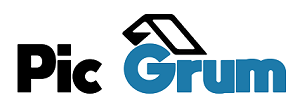You’re ready for the next step in your career, but it’s been a long time since you’ve updated your CV. It’s time to shake off the dust and resume checker. But what’s the best format for telling you what you want to be and what you want to achieve?
A functional CV focuses on your skills and talents. It shows the person looking at your resume how your hiring will contribute to your company’s goals. This format also helps to hide any problems with your employment history that a chronological CV might reveal, such as little work experience or gaps in your work.
Functional resume: introduction
The functional CV format is suitable for people with extensive education, training or work-related skills. It is therefore appropriate for recent graduates or seasoned employees who are changing careers to one in which their skills and education will be useful. A functional CV is also useful for people who have worked in a small number of organisations and whose skills are more important than their previous jobs.
A functional resume highlights your skills and dispositions and how they relate to the job for which you are applying. Often the skills you have are the same as those described in the job advertisement. This type of CV is best suited to people working in technical or skilled jobs or starting a new career.
Functional resume format
A functional format is very unique. It is designed to allow recruiters to quickly assess your qualifications and encourage them to read your full resume to find out more. An easy way to structure your CV is to choose a template which can be found online and then put the information in the relevant sections as outlined in the template. In any case, you should know what the structure of a functional CV looks like.
The basic structure of a functional CV includes:
- Name, surname and contact details (email, phone number and address);
- The title of the position for which you are applying;
- A brief statement of your career goals and skills that meet the requirements of the job posting;
- Hard Skills – The emphasis is on these. These are skills directly related to the job;
- Additional skills – soft skills, appropriate to the position;
- Education – formal, vocational and follow-up training for certain skills (note: this section may precede the Skills section if you have recently completed training or have recently completed training that qualifies you for the position);
- Work experience – a short list of employers, positions, start and finish dates;
- Industry certifications;
- Membership in professional organisations;
Volunteering.


Comments are closed.